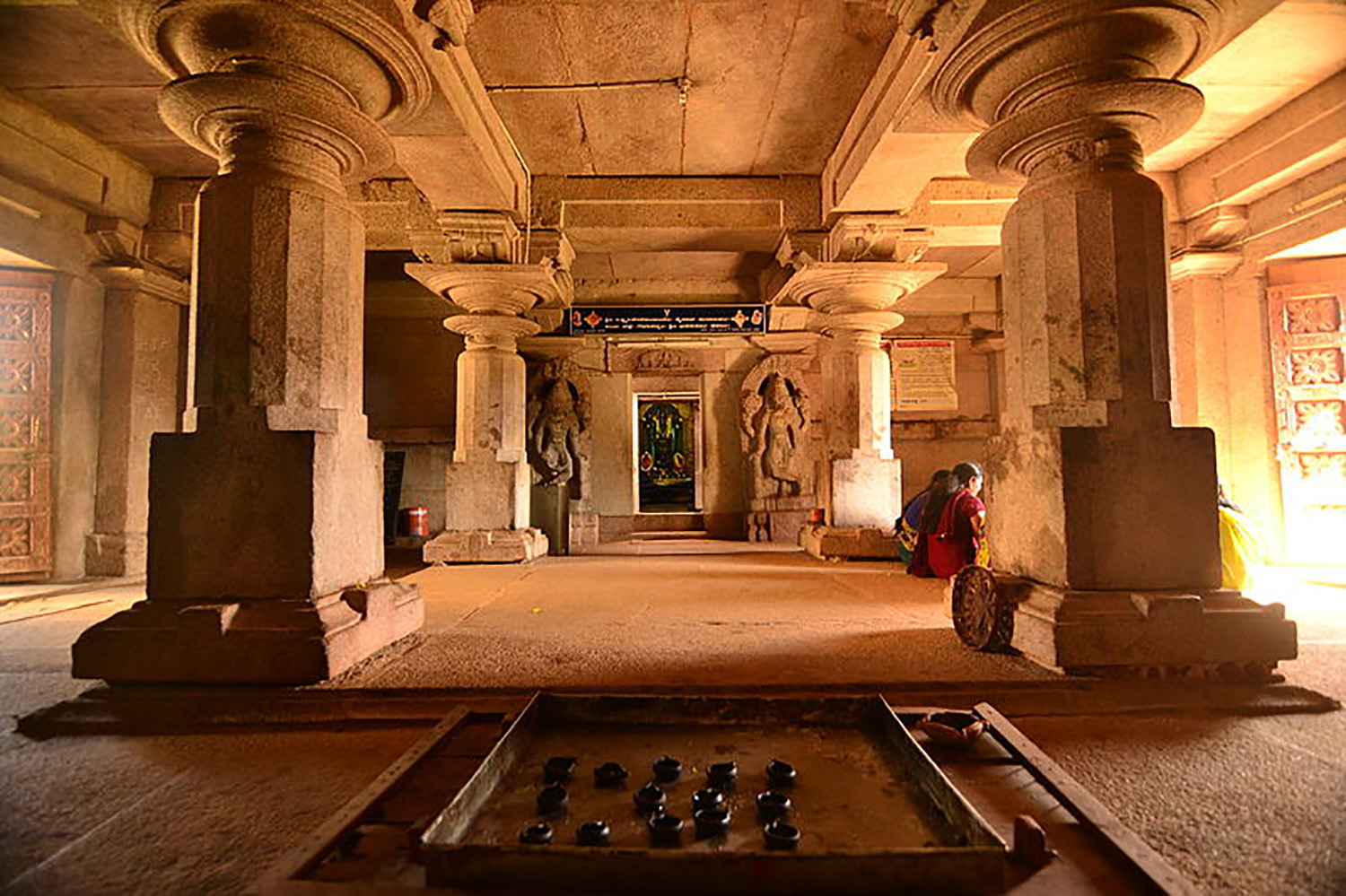ARTICLE
Jakanachari
Initially credited as the architect and sculptor of several temples in the Karnata Dravida style of architecture, Jakanachari is today considered to be a mythical figure. Instead, scholars believe that the name may represent an artisan guild that was active between the tenth and thirteenth centuries in present-day Karnataka, when the region was under the rule of the Western Chalukya and Hoysala dynasties. While it is unclear when the myth of Jakanachari originated, the name is documented in colonial reports of temples in the Deccan region.
There are several popular legends associated with Jakanachari. He is believed to have been born in Kaidala, a village in Tumakuru district, Karnataka, India. According to one legend, he left his home in search of work, leaving behind a pregnant wife. Several years later, while Jakanachari was working on a sculpture to be installed in the complex of the Chennakeshava temple, Belur, a young man — eventually revealed to be his son, Dankanachari — spotted a flaw in his work. When the flaw was revealed, the dejected master artisan cut off his right hand. He later had a vision in which he received an instruction to build a temple to Vishnu in his village; his hand was restored once the temple was consecrated, with the village gaining the name Kaidala, meaning “restored arm”. Another myth claims that Jakanachari’s skill allowed him to build temples in a single day.
Some scholars suggest that the name Jakanachari may have been derived from the terms dakshinacharya or tenkanacharya, meaning “sculptor of the southern region/or of the south.” Others have suggested that the roots of the name can be linked to the term yaksha. The likelihood that Jakanachari was a mythical figure has been largely based on the construction dates of three Hoysala temples that Jakanachari is credited with having worked on: the Chennakeshava temple in Belur, the Hoysaleshvara temple in Halebidu and the Chennakeshava temple in Somanathapura. While the first two temples were built in the early twelfth century, the temple at Somanathapura has been dated to the mid-thirteenth century, making it extremely unlikely that any artisan could have worked on all three temples. Further, given that Western Chalukya and Hoysala temples spanning nearly three centuries are associated with the Jakanachari legend, it is likely that the term referred to a guild of artisans who worked on temples of the Karnata Dravida style during this period. This guild and eleventh-century artisans such as Dasoja may have been integral to the adoption and evolution of the style under Hoysala patronage. It is also notable that there is no epigraphic evidence of Jakanachari in the form of inscriptions at a time when several master artisans working on Hoysala temples inscribed their signatures on their images.
The myth of Jakanachari has been repeatedly depicted in popular culture in Karnataka, notably in the film Amarashilpi Jakanachari (1964). In 1995, the state government of Karnataka instituted the Jakanachari Award, which is conferred on master sculptors and artisans of the state.
Bibliography
Cousens, Henry. Mediæval Temples of the Dakhan. Calcutta: Government of India, Central Publication Branch, 1931.
Fergusson, James. History of Indian and Eastern Architecture. London: John Murray, 1910.
G., Apoorva, and Srikumar M. Menon. “In Search of a Mythical Artisan: Tracking the Jakanachari Legend of Karnataka.” In Human and Heritage: An Archaeological Spectrum of Asiatic Countries, edited by Rajesh S. V., Abhayan G. S., Preeta Nayar, and Ehsan Rahmath Ilahi, 497–524. New Delhi: New Bharatiya Book Corporation, 2019.
“Jakanachari Award.” Karnataka Government. Accessed March 03, 2023. https://www.karnataka.gov.in/page/Awards/State+Awards/Jakanachari+Awards/en#:~:text=To%20encourage%20this%20fine%20tradition,5%20lakhs.
Narasimhachar, R.. The Kesava Temple at Somanathapur. Bangalore: Mysore Government Press, 1917. https://archive.org/details/dli.ernet.507560.
Shyam Prasad, S. Enigmas of Karnataka. Chennai: Notion Press, 2018.







